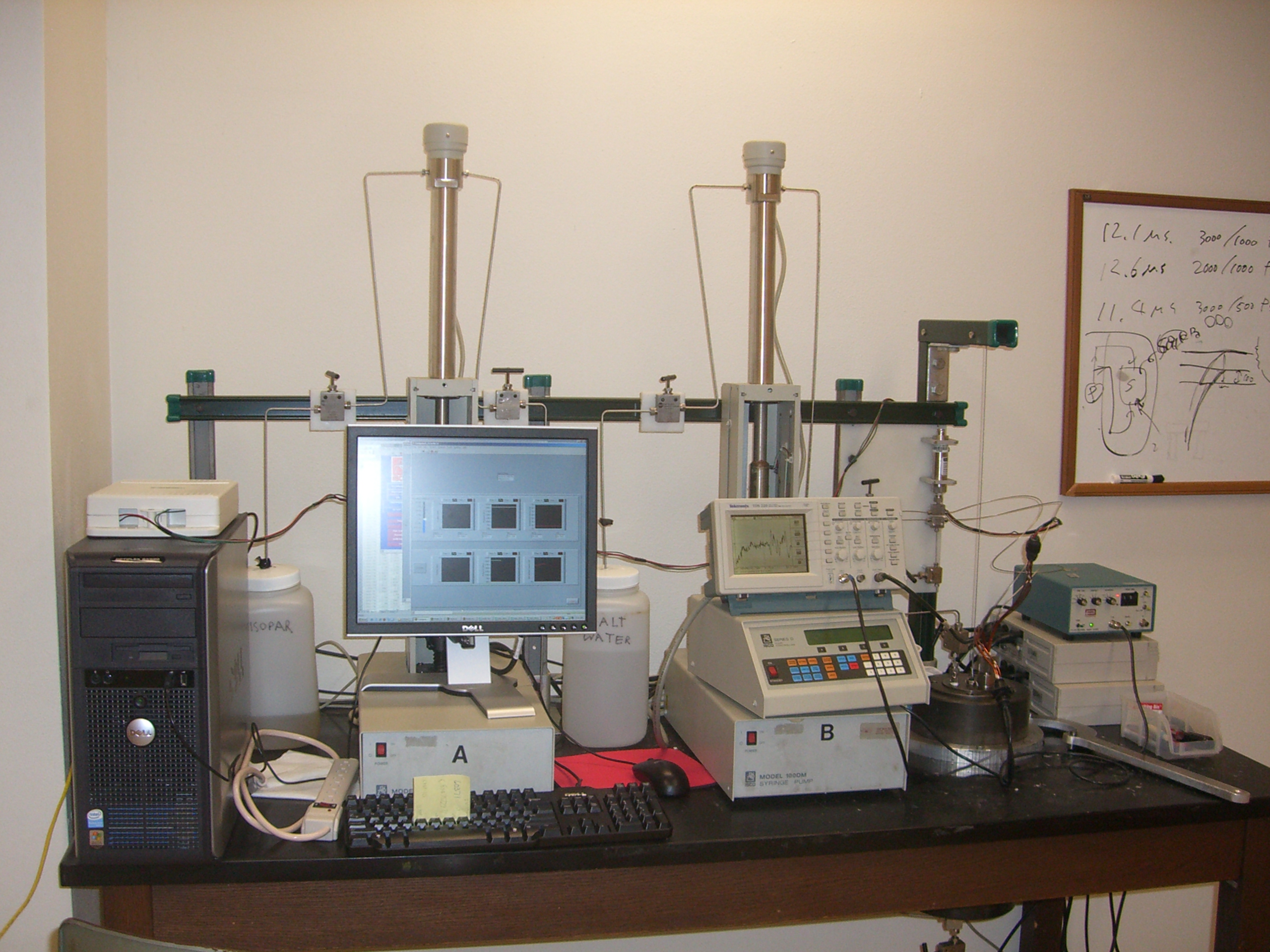Study > Velocity measurement
研究 > 弾性波速度測定
海底などにたまる堆積物は初め間隙率が70−80%もあり,未固結です。堆積が進行したり,沈み込み帯で深部に持ち込まれたりすることによって脱水し,セメントができて次第に岩石化して行きます。すると弾性歪みエネルギーを蓄えられる物性を獲得し,いずれ地震を起こすと考えられます。このような岩石化のプロセスを続成作用といいます。続成作用がどのようなメカニズムでどの程度進行しているのかを沈み込み帯で明らかにすることは堆積物が地震発生能力を獲得する様子を知ることになります。堆積物の固さを表す指標として,弾性波速度を測定します。弾性波にはP波とS波があり,それぞれの波が岩石を伝わる速さで固さを定量的に理解します。実験は封圧や流体圧をコントロールして行います。
Sediments on the seafloor have porosity of 70-80% at the initial setting, under unlithified condition. Progressive sedimentation and underthrusting into deep along subduction plate interface make sediments dewatered and cemented, to be lithified rocks gradually. Then, rocks get a property to maintain elastic energy. Finally, the rocks generate earthquakes. The lithification process is called diagenetic process. The understanding how the diagenetic processes are ongoing along subduction zones is that we know how the sediments get the seismogenic properties. One of indexes of lithification is elastic wave velocity. Elastic waves are composed of P- and S- waves. Measuring the elastic wave velocity quantitatively, we understand the state of lithification quantitatively. The laboratory experiments are conducted under controlled confining and fluid pressures.
